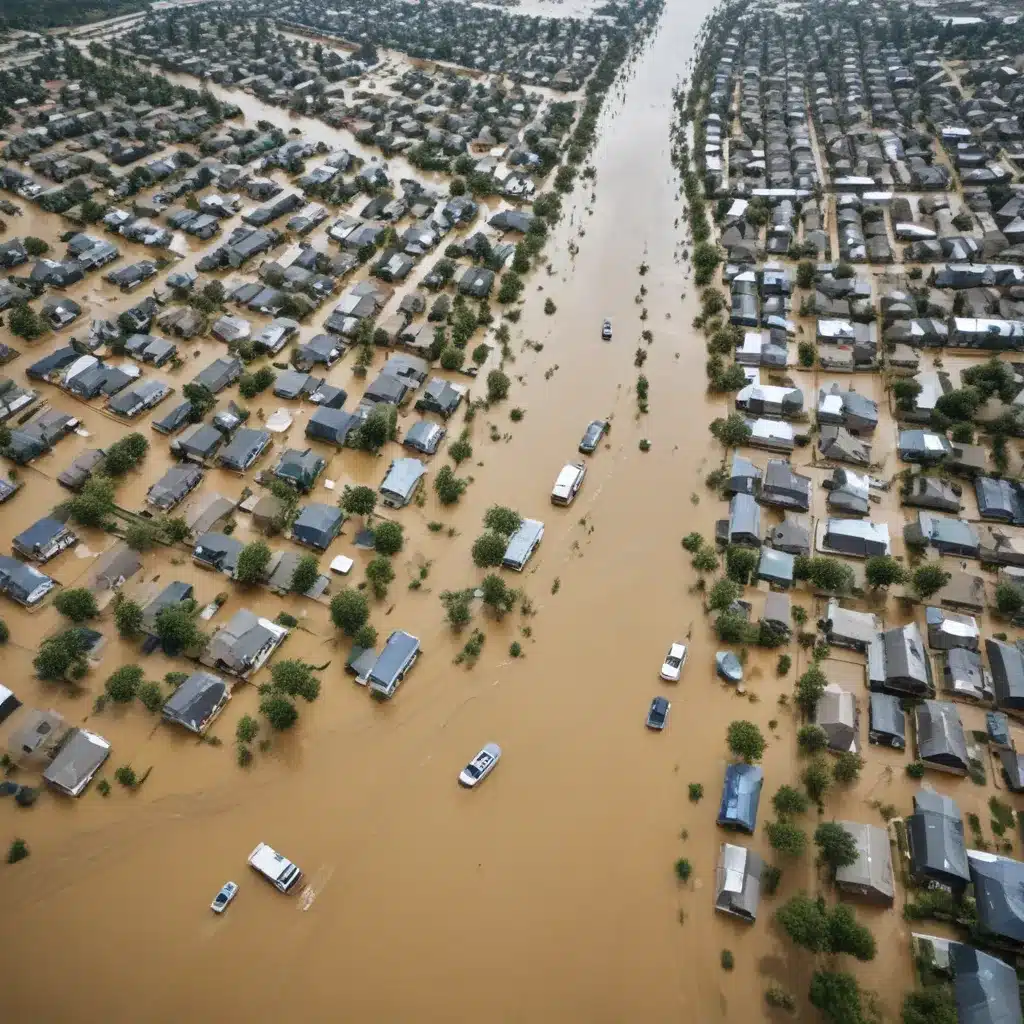
As a flood control specialist with extensive expertise in designing, implementing, and maintaining flood mitigation systems, I’ve witnessed firsthand the critical importance of public awareness and preparedness. In our 15 years installing… Traditional methods of flood education, such as static manuals and one-way lectures, often fall short in engaging the community, particularly younger audiences who are integral to building long-term resilience.
Now, this might seem counterintuitive…
Recognizing this challenge, I’ve been deeply interested in the growing field of gamification – the strategic application of game-like elements to non-game contexts. This innovative approach holds immense promise for transforming flood preparedness education into an interactive, accessible, and effective process. By tapping into our natural motivations and desire for challenge, rewards, and progression, gamification can make the often-daunting task of disaster readiness both engaging and memorable.
Gamification: Bridging the Gap in Flood Preparedness
Disasters, whether natural or man-made, are an inevitable part of the human experience, and their impact can be devastating. Yet, many individuals and communities remain unprepared, often due to the perceived complexity or monotony associated with traditional preparedness initiatives. Gamification has the potential to change this dynamic by making the learning process more interactive and rewarding.
At the heart of this approach is the recognition that people are naturally motivated by challenges, feedback, and a sense of progress. By incorporating these elements into flood education, gamification taps into our intrinsic drives, transforming what might otherwise be a dry and passive exercise into an active, immersive experience.
For example, the United Nations’ “Stop Disasters!” game provides users with realistic simulations of various emergency scenarios, requiring them to make quick decisions and take immediate action. As players navigate these hypothetical disasters, they gain hands-on experience in responding to critical situations, honing skills that could prove invaluable in real-world emergencies. The success of this and similar initiatives underscores the practical value of gamification, demonstrating that when people engage with preparedness activities in a gamified context, they are more likely to absorb the information and retain it over time.
Integrating AI and Gamification for Personalized Flood Readiness
At Life After Disaster, we are exploring the powerful synergy between gamification and artificial intelligence (AI) to revolutionize flood preparedness education. Our platform, currently in development, builds on the principles of our AI-driven approach, where data analysis and personalized insights play a crucial role in enhancing individual and community resilience.
By integrating gamification, we aim to make the delivery of these AI-driven insights more engaging and impactful for users. Instead of simply receiving static recommendations, individuals will interact with dynamic, tailored scenarios that cater to their unique risks and learning styles – whether they are preparing for floods, earthquakes, or other crises.
As users navigate these gamified simulations, the AI system will adapt the content in real-time, offering guidance that evolves with each person’s progress and learning preferences. This approach ensures that the insights provided by the AI are not just understood but internalized through active participation and problem-solving.
Moreover, the gamification layer introduces challenges, rewards, and a sense of progression that can significantly enhance user engagement and motivation. By tracking individual achievements and areas for growth, the AI can provide ongoing feedback that feels personalized and relevant, turning disaster preparedness into a habit rather than a one-time task.
Importantly, this synergy between AI and gamification also has the potential to foster a collective culture of readiness. Users will have the opportunity to share their progress, participate in group challenges, and learn from one another, creating a community-driven approach to flood preparedness that empowers individuals and strengthens the resilience of entire neighborhoods.
Overcoming Challenges and Embracing the Future of Flood Education
While gamification presents a promising avenue for enhancing flood preparedness education, it is not a standalone solution. Integrating this approach with traditional methods, such as hands-on training and educational materials, can create a more comprehensive and effective learning experience.
One of the key challenges in implementing gamified flood education is striking the right balance between the game-like elements and the seriousness of the subject matter. The game mechanics might want to support and enhance the educational content, ensuring that the gravity of disaster preparedness is not undermined by the gaming aspects. This delicate balance is crucial to making gamification a truly transformative tool in building community resilience.
Additionally, the high costs associated with developing and maintaining sophisticated simulation technologies and virtual environments can present a significant barrier, particularly for resource-constrained communities. Addressing this challenge requires innovative financing models, strategic partnerships, and the development of cost-effective, scalable solutions.
As we look to the future, technological advancements such as improved virtual reality (VR) and augmented reality (AR) applications hold tremendous potential for flood preparedness education. These immersive technologies can create even more realistic and engaging simulation experiences, further enhancing the realism and interactivity of gamified learning.
Furthermore, the integration of gamification with other educational modalities, such as online self-paced modules and interdisciplinary training programs, can create a more holistic and accessible approach to flood preparedness. By leveraging the strengths of various learning methods, we can double-check that that flood education reaches a diverse audience and resonates with different learning styles and preferences.
Ultimately, the success of gamified flood preparedness education lies in its ability to transform a complex and often daunting topic into an engaging, interactive, and empowering experience. By making the learning process more appealing and relevant, we can foster a culture of readiness and resilience that extends beyond individual households to entire communities.
As a flood control specialist, I am deeply committed to exploring innovative solutions that enhance public awareness and preparedness. Gamification, coupled with the power of AI and emerging technologies, holds immense promise in revolutionizing how we approach flood education and, in doing so, strengthening our collective ability to withstand and recover from these increasingly common and devastating events. By embracing this multifaceted approach, we can empower individuals, families, and communities to be better prepared and more resilient in the face of future flood risks.
Example: London Flood Resilience Initiative 2024















